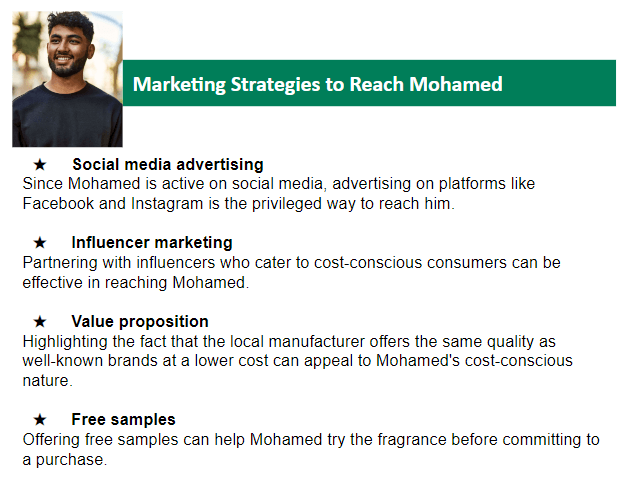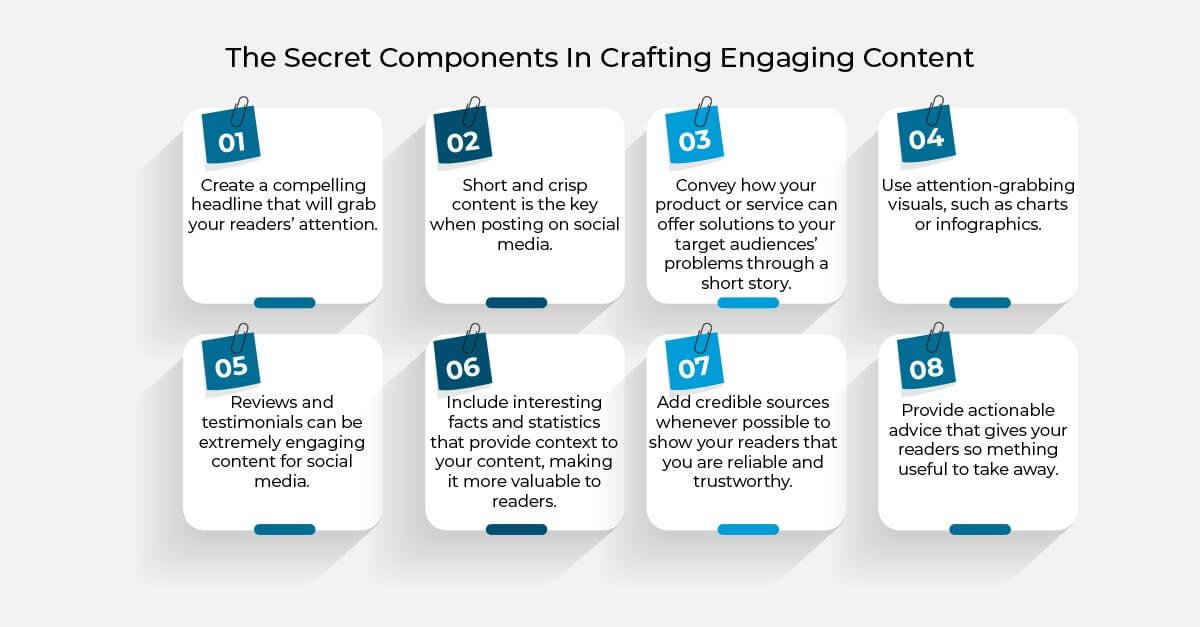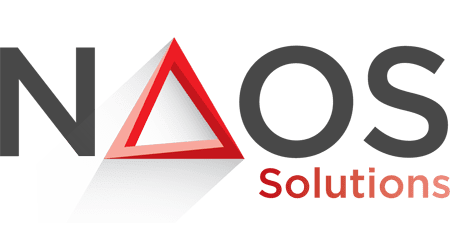In digital marketing, many rush towards paid advertisements, drawn by the allure of swift returns. Yet, hidden in plain sight lies an often-underestimated powerhouse: Content Marketing. This strategy offers a more lasting ROI and thrives beyond the fleeting life span of ads.

Content marketing is less about selling and more about building relationships and establishing trust. When you focus on providing value, customers follow.
In this article, we will go into deep content marketing from a business perspective, identify target audience personas, brainstorm creative content ideas, and see more about optimizing SEO content.
Content is The King: Understanding the Role of Content in Digital Marketing
What is Content Marketing?
Imagine walking into a party where everyone is shouting about their achievements, but one person is calmly narrating an enthralling story by the fireplace. Everyone gravitates toward the storyteller, captivated. In the clamor of the digital world, while paid ads are those loud shouters, content marketing is that compelling storyteller.
Content Marketing is the art of crafting valuable, relevant, consistent content to capture hearts and minds. Unlike its boisterous cousin, paid advertising, which unabashedly screams “buy me!” content marketing serenades its audience, building a relationship of trust and authority.
Whether for a B2B brand wooing another business with insightful whitepapers or a B2C brand engaging consumers with relatable stories, content marketing nestles itself seamlessly into a brand’s broader content strategy. It’s about fostering connections, understanding pain points, and delivering value.
How To Succeed With Your Content Strategy?
Let’s open the curtains on a little industry secret: 82% of marketers actively invest in content marketing.
Let’s dissect the DNA of the high-flyers in content marketing who proudly wear the “Very Successful” badge on their sleeves. What’s their secret sauce?
For starters, they’re not just scribbling ideas on napkins. Oh no, they have a polished, well-documented content strategy locked and loaded, with clear and measurable objectives. They work with content guidelines, a clear target, and defined personas.

They’re also not shy about investing in their content, dedicating over 10% of their marketing budget. And they’re not resting on their laurels either, with plans to bolster that budget even more. Being confident with the content they developed, they amplify their reach using paid channels to broadcast their content symphony far and wide. In essence, they’re the savvy maestros conducting a harmonious content orchestra.
From Brand Visibility to Trust Building: Exploring the Benefits of Content Marketing
Here are some reasons content creation is essential in digital marketing:
1# Attracting and Engaging Audiences
Well-crafted content is a powerful tool for attracting and engaging potential customers. Whether it’s a blog post, social media update, video, or infographic, valuable content helps grab users’ attention and encourages them to interact with your brand.
2# Building Brand Authority
By consistently creating and sharing valuable content, a business can position itself as an authority in its industry. Consumers who see a brand as knowledgeable and trustworthy will prefer its products or services over competitors.
3# Search Engine Optimization (SEO)
Content plays a crucial role in SEO. Search engines like Google reward websites with relevant, high-quality, and unique content by ranking them higher in search results. This visibility is essential for driving organic traffic to your website.
4# Lead Generation
Content marketing can be a potent lead-generation tool. By offering valuable content, businesses can capture leads through email subscriptions, forms, or gated content, allowing for further nurturing and potential conversion into customers.
5# Social Media Sharing and Engagement
Engaging content is highly shareable on social media platforms. When users find content that resonates with them, they are more likely to share it with their followers, expanding your brand’s reach and increasing engagement.
6# Educating Customers
Content marketing allows businesses to educate customers about their products, services, and industry. By addressing common questions and concerns, brands can create informed customers more likely to make confident purchase decisions.
7# Fostering Customer Loyalty
Regularly providing valuable content keeps your brand top-of-mind for your audience. This ongoing engagement fosters loyalty and encourages customers to return for repeat business.
8# Adapting to the Customer Journey
Different types of content can cater to various stages of the customer journey, from awareness to consideration and decision-making. Tailoring content to the different stages helps nurture prospects and guide them toward making a purchase.
9# Measurable Results and Data Insights
Digital content marketing provides measurable results through analytics. This data helps marketers understand what works and what doesn’t, allowing for continuous improvement of content strategies.
10# Cost-Effectiveness
Content creation can be cost-effective compared to traditional advertising.
Once produced, content can have a lasting impact, attracting organic traffic and engagement.
Let’s give here a real-life example of the cost-effectiveness of content marketing. You are reading a post from our blog called “Digital Egypt.” We published in January 2023 an article titled Top 6 Online Payment Gateways in Egypt. The article managed to forge its way to be ranked #1 in Egypt for the keyword “online payment gateways”. Almost 10 months later, it continues to attract a lot of traffic to our website. In the last 28 days, it counted about 22K organic Google search impressions and 430 clicks from an audience of great interest to us: people considering options for an e-commerce website. They may need NAOS Digital services to build their website or for their SEO and social media strategy. The article required hours of research, investigation, and content creation, but it was completely worth it!
Target Audience: Decoding Personas and Preferences
Why Audience Personas Matter
Think of audience personas as the tailored suits of content marketing. They’re meticulously crafted profiles that represent segments of your audience, offering invaluable insights into their behaviors, motivations, challenges, and preferences.
When you truly understand who you’re speaking to, you can tailor your content to resonate deeply on a personal level. It’s like having a secret roadmap to the hearts and minds of your audience. Without these personas, you’re navigating the vast ocean of digital marketing without a compass, risking your messages being lost in the vastness.
Let’s see here a real-life example of a Persona that we have developed for a client, an Egyptian fragrance manufacturer who needed to understand its clients better:

This persona allows us to build strategies that will resonate with him:

10 Expert Ways To Define Your Persona(s)
Conducting a target audience analysis involves gathering and evaluating data on individuals most likely to use your product or service. Your ultimate goal is to discover your audience’s defining and distinctive traits.
Studying your target audience can be done in various ways, typically involving the same phases. Your strategy will depend on your type of company (B2B or FMCG, for example), the budget it is willing to invest, and your product’s life cycle.
Identifying target audience personas and understanding their preferences is essential for creating content that resonates with your audience and drives meaningful engagement. Here’s a step-by-step process to help you identify your personas and gather insights into their content preferences:
1- Conduct Market Research
- Research your industry, market trends, and competitors to understand the broader landscape.
- Identify the primary demographics (age, gender, location, education, etc.) of your potential customers.
2- Analyze Existing Customer Data
- Look into your existing customer database to gather insights about customers’ characteristics, behaviors, and preferences.
- Analyze website analytics, social media insights, and email marketing data to understand which content types and topics perform well.
3- Analyze Competitor Content
- Look at your competitors’ content strategies and see what resonates well with their audience.
- Identify gaps in the content that you can address to differentiate your brand.
4- Social Media Listening
- Monitor social media platforms to see what your target audience discusses, shares, and engages with.
- Identify popular hashtags and topics relevant to your industry.
5- Interview Your Customers
- Conduct one-on-one interviews with some of your customers to gain deeper insights into their needs and preferences.
- Ask open-ended questions to understand their challenges, motivations, and how they make purchasing decisions.
6- Create Customer Surveys
- Develop surveys to gather specific information about your audience’s interests, pain points, and content preferences.
- Ask about their favorite content formats (blogs, videos, infographics), topics they find valuable, and their preferred platforms for consuming content.
7- Create Audience Personas
- Based on the collected data and insights, create detailed audience personas representing different segments of your target audience.
- Each persona should include demographic information, interests, pain points, content preferences, and preferred communication channels.
8- Content Preference Testing
- Experiment with different types of content (blogs, videos, podcasts, infographics) and topics to see which ones perform the best.
- A/B test content to understand what resonates most with each persona.
9- Feedback and Iteration
- Continuously gather feedback from your audience through surveys, comments, and interactions.
- Use the feedback to refine your content strategy and tailor content to meet your audience’s evolving preferences.
10- Personalization
- Use your collected data to personalize content for different audience segments.
- Delivering personalized content can significantly enhance engagement and conversion rates.
Aligning Content to Audience Desires
The explosion of digital channels has left many companies asking, “How do we populate these platforms with meaningful content?” It’s not just about filling space but ensuring the content is significant for consumers and amplifies their interest in the brand. This thought process extends beyond digital realms, prompting questions like, “What content should my brand be associated with? What should I sponsor, link to, or create?” The answers lie in understanding Brand Territories.
Defining Brand Territories
At its core, brand territories represent situations or contexts where brands want consumers to associate with them. For instance, water brands might be associated with health and naturally align with sports. On the other hand, energy drink brands might want to link with adrenaline rushes, prompting association with extreme sports. This goes beyond simple positioning; while positioning ties a brand to attributes (e.g., energy drink = adrenaline), territories establish the scenarios promoting those associations (e.g., energy drink = extreme sports). Picking suitable territories is vital as it influences brand positioning.
Structuring Brand Content: When building brand territories, it’s crucial to audit your brand’s content. Analyzing platforms like a company’s Facebook wall reveals content in four primary categories:
- Brand: Reinforces the brand’s primary message or positioning.
- Product: Focuses on specific products, highlighting their value propositions.
- Experiences: Amplifies consumer experiences and events.
- Territories: Links to themes creating direct associations with contexts meaningful for the brand.
Interestingly, while brands prioritize content about themselves, products, experiences, and relevant contexts, consumers often engage more with the reverse. They’re most interested in content that reflects their own experiences and contexts.
How exactly do we pinpoint these territories? A personalized adaptation of the Google Onion provides an efficient roadmap:
- At the heart of the mapping, define the brand you’re working on.
- On the layer above, outline the product portfolio.
- On another layer, divided in 2, detail the functional benefits the products bring to your target and the emotional benefits on the other.
- Finally, on the external layer, write down all the possible content territories that connect your target (persona) to the functional or emotional benefits and products.
- Select up to 3 of the territories and provide a list of content titles that will serve as examples to define the content territories your brand should conquer or defend.
For example, analyzing a consumer brand like Dove through this process might reveal territories associated with beauty, self-confidence, and natural care.
Following this method, you can create content intrinsically tied to its ability to serve a purpose or cater to its audience’s needs. When discussing “valuable content,” we focus on material beyond merely filling a gap; it is deliberate, insightful, and resonates with its readers or viewers.
At its core, valuable content is relevant, addressing the interests and challenges of its audience while often providing actionable solutions. Moreover, the integrity of content is paramount; it should be original, trustworthy, and timely, offering insights or perspectives that aren’t easily found elsewhere. A significant facet of valuable content is its presentation—it should be engaging, interactive, and structured to enhance the user experience.
The Art of Content Ideation
Beyond the Obvious: Creative Brainstorming
The key to success in any marketing campaign is to create exciting content that is interactive, engaging, and grabs the audience’s interest so it can drive the desired results. Content must provide real value and be captivating and fascinating for the audience, and this can be presented through writing blog articles, producing videos, or releasing podcasts. Including the proper elements and avoiding the bad ones will make the content engaging for readers and viewers.

If you want to publish engaging content, you need to include a few key components:
Navigating The Diversity of Content Types
- Storytelling with User-generated Content (UGC)
Encourage your audience to share their experiences, stories, or testimonials about your brand or products. Showcase UGC through videos, posts, or dedicated blog articles, as it adds authenticity and builds a sense of community. 55% of consumers are more likely to remember a story than a list of facts. 68% of consumers say that brand stories influence their purchasing decisions.

- Interactive Quizzes and Polls
Develop fun and interactive quizzes or polls related to your industry or products. People enjoy participating in quizzes to test their knowledge, and polls make them feel engaged by expressing their opinions. According to Rock’s survey, 60% of organizations that use interactive content can better measure their efficiency, while this percentage is only 25% among those that use static content.
- Behind-the-Scenes Videos
Describe your company culture, product development process, or day-to-day operations. Behind-the-scenes videos humanize your brand and create a connection with your audience. 64% of consumers say that watching a marketing video on Facebook has influenced a purchasing decision.
- Educational Content and Tutorials
Create informative content like how-to videos, step-by-step guides, or educational blog posts that help your audience solve problems or learn something new. Providing value through educational content builds trust and positions your brand as an authority.
- User-Interactive Content
Develop content that allows users to interact with it actively. This can include interactive infographics, quizzes, or mini-games that entertain while conveying your brand message.
- Live Q&A Sessions and Webinars
Host live question-and-answer sessions or webinars to address your audience’s queries and concerns. It’s an excellent way to engage in real-time and establish a two-way communication channel.
- Inspirational and Motivational Content
Share inspiring stories, quotes, or videos that resonate with the emotions and aspirations of your audience. Inspirational content often gets shared and helps strengthen the emotional connection with your brand.
- Contests and Giveaways
Run contests or giveaways encouraging user participation and engagement. People love the chance to win something, and this can create excitement around your brand.
- Curated Content
Gather valuable industry-related content from various sources and curate it into a comprehensive and insightful roundup. This saves your audience time and effort while providing them with valuable information.
- Interactive Infographics
Infographics are considered the second most valuable visual content at 36.6%. Create visually appealing and interactive infographics that engagingly present data and information. This helps to simplify complex topics and increases shareability. Content posts with images and graphics have up to 650% higher engagement. Infographics are 30 times more likely to be read than a written article. Presentations that include infographics are up to 43% more persuasive than those without. Also, we can find that Websites that use infographics within their content generate 12% more traffic than those that don’t.
- Seasonal and Holiday-themed Content
Develop content around relevant holidays or events that align with your brand. Tie your products or services to the occasion to capitalize on the festive spirit.
- Mini Documentaries or Case Studies
Tell compelling stories through mini-documentaries or case studies that showcase how your products or services have positively impacted real people or businesses.
- Virtual Tours or Product Demos
If applicable, offer virtual tours of your store or workspace or provide product demonstrations to give your audience a more immersive experience.
- Memes and Humorous Content
Share lighthearted and humorous content, such as memes or funny videos, that align with your brand’s tone and resonate with your audience’s sense of humor. Over 60% of people say they would be more likely to buy from a company that uses memes in their marketing.
A handy tool widely used by professional content creators is the Periodic Table of Contents.
Crafting and Curating Engaging Content
Create a content calendar
Planning out content in advance can help ensure that it aligns with your overall marketing strategy and that you consistently deliver value to your audience. Set a schedule for publishing content and stick to it to build a loyal following and improve engagement over time.
The Unyielding Power of Blogs and Articles
In the digital realm brimming with GIFs, memes, and 15-second videos, there lies an old yet resilient hero – the written words. Blogs and articles have an almost vintage allure.
But make no mistake, their power isn’t just in nostalgia. Well-crafted textual content is like an engaging novel; it pulls you in, keeps you hooked, and stays with you long after the last full stop. While fleeting trends come and go, the lasting impact of a brilliantly written article remains etched in the reader’s mind, proving that classics never truly go out of style.
Social Media Posts: Short, Sweet, and Powerful
Let’s transition from our long-form hero to its zippy counterpart – social media posts. In the grand digital feast, if blogs are the main course, these posts are the appetizers.
Short, savory, and oh-so-addictive. The magic lies in their brevity. With limited characters, they’re like mini challenges for brands: “Can you wow your audience in just a sentence or two?” And you have to engage in a delicate ballet of wit and imagery. When the words and the visuals are perfectly paired, Boom! You get instant engagement. It’s not about yelling the loudest but rather whispering the most intriguing tales into the eager ears of scrolling netizens.

Videos: The Digital Era’s Storytelling Medium
Step aside for the showstoppers of the digital arena – videos. If pictures are worth a thousand words, videos are the grand epics of our time. They’re the modern storytellers, weaving tales through a tapestry of visuals, sound, and motion. With the ability to elicit laughter, tears, and every emotion in between, videos hold a mesmerizing grip on their audience. Whether it’s a quick clip on TikTok or an in-depth documentary on YouTube, they harness the raw power of visual narratives, ensuring viewers are not just watching but genuinely feeling the story.
So, from the timeless allure of written words to the compelling charm of videos, the digital world offers a smorgasbord of content options. The trick? Knowing when to serve what and to whom.
Practical Tips Not to Forget!
Emotion is a powerful tool that can help you create content that resonates with your customers. Use emotions to connect with your audience on a deeper level, even with B2B audiences! Use language that evokes happiness, sadness, anger, or fear. Make sure that your content is authentic and not manipulative.
Use hashtags to increase views, likes, and shares while promoting your brand on social media platforms like Twitter, Instagram, Facebook, and LinkedIn. Hashtags can help you expand your audience, foster stronger interactions, and raise your brand’s visibility. By effectively grouping conversations or information related to a specific topic, hashtags make it simple for users to identify stuff that interests them and find it quickly.
Optimizing for Visibility: Mastering SEO Content Optimization
Optimizing content for Search Engine Optimization (SEO) involves making your web pages more visible and appealing to search engines like Google, Bing, and others. When your content is optimized effectively, it is more likely to rank higher in search engine results, leading to increased organic traffic and potential customers.
Here are some key steps to optimize your content for SEO:
- Keyword Research: Use keyword research tools like Google Keyword Planner, SEMrush, or Ubersuggest to find high-volume and low-competition keywords.
- High-Quality Content: Create valuable, informative, and engaging content that meets the needs and interests of your target audience.
- On-Page Optimization:
- Title Tag: Use the main keyword in the title tag and keep it concise (around 50-60 characters).
- Meta Description: Craft a compelling meta description that includes the target keyword and encourages users to click through to your page.
- Headers (H1, H2, etc.): Use header tags to structure your content and make it more scannable for readers and search engines.
- URL Structure: Keep URLs short and relevant, and include the target keyword if possible.
- Keyword Usage: Integrate the target keyword naturally throughout the content. Do not forget to strategically place the keywords in the alternative texts of your images. You need to find the right balance to avoid keyword stuffing that will penalize your page.
- Mobile-Friendly Design: Ensure your website and content are optimized for mobile devices, as mobile-friendliness is essential to search engine rankings.
- Page Speed: Optimize your website’s loading speed by compressing images, leveraging browser caching, and using efficient coding practices. Search engines and users alike prefer faster-loading pages.
- Internal Linking: Connect relevant pages within your website using internal links. This helps search engines better understand your site’s structure and content hierarchy.
- External Linking: Include outbound links to authoritative sources to provide additional value to your readers. Contextual links signal to search engines that your content is well-researched.
- Use of Multimedia: Incorporate images, videos, and other multimedia elements into your content to enhance user engagement.
- Social Sharing: Encourage social sharing of your content, as it can increase its visibility and potential for attracting backlinks.
- Monitor Analytics: Use tools like Google Analytics and Google Search Console to track your website’s performance and identify areas for improvement.
Remember that SEO is an ongoing process, and it may take time to see significant improvements in rankings. Stay consistent with your efforts, adapt to search engine algorithm changes, and focus on providing value to your audience through your content.
Evaluating Content Performance: Analyzing Content Performance
Companies must meticulously define and monitor their content marketing objectives in today’s business landscape. A systematic approach to establishing clear, measurable goals coupled with the right key performance indicators (KPIs) is vital for accurately evaluating the success of content marketing initiatives.
Interestingly, recent findings from SEMRush’s State of Content Marketing: 2023 Global Report suggest that among the marketers who rate their content strategy as “Very Successful,” a mere 34% believe they measure content marketing ROI effectively. In contrast, an even smaller fraction, only 3% of those who consider their strategy “Unsuccessful,” think they’re measuring ROI appropriately. This underscores a significant challenge in content marketing: effective measurement. Without an accurate grasp of ROI, businesses may find it challenging to optimize their strategies and gauge the actual value of their content efforts.
But companies can leverage analytical tools like Google Analytics and social media insights to monitor KPIs that matter, such as page views, time on page, click-through rates, and conversion rates. Moreover, it’s essential not to overlook qualitative aspects of audience engagement. Monitoring feedback, comments, and other interactions can provide valuable insights into content resonance and areas for refinement.
Additionally, implementing A/B testing for various content elements, like headlines and calls to action, can guide businesses toward what truly resonates with their target audience, leading to more informed, data-driven decisions.
Remember that data-driven improvements are most effective when combined with a deep understanding of the target audience and their needs. Balancing data-driven insights with creativity and audience empathy will help to create compelling and engaging content that resonates with the audience and achieves the business objectives.
Conclusion
As the MENA region continues its digital transformation journey, the future of content marketing within its borders holds promising potential. With its rich tapestry of cultures, languages, and traditions, the MENA region offers a unique canvas for marketers to craft compelling narratives that resonate deeply with local audiences.
The rapid adoption of technology, especially in areas like mobile connectivity and social media, will further amplify the reach and impact of content strategies. Moreover, as the younger, tech-savvy demographic ages, there will be a natural gravitation towards more innovative and interactive content forms, from augmented reality experiences to immersive storytelling.
However, with opportunity also comes challenges. Marketers will need to tread the fine line between global best practices and localized nuances, ensuring their content is universally relatable and culturally pertinent. Authenticity will be the watchword, as audiences in the MENA region will increasingly seek brands that understand and respect their values and aspirations.
Furthermore, differentiation will be paramount as the global content landscape becomes saturated. The brands that will thrive in the MENA’s future are those that invest in understanding their audience at a granular level, leveraging data analytics, and combining it with a profound appreciation of regional idiosyncrasies.
At NAOS Digital, we understand the importance of creating effective marketing content that resonates with your target customers. Our team has extensive experience developing high-quality content for websites and social media that engages your target audience, increases brand awareness, and drives sales.
Don’t hesitate to contact us now to develop engaging content that engages your audience and drives business success.


2 comments
Pingback: How to Be a Digital Creator - Markt Value
Pingback: Continuously creating content that is both original and engaging
Comments are closed.